Features
Georgia’s stolen children: Twins sold at birth reunited by TikTok video
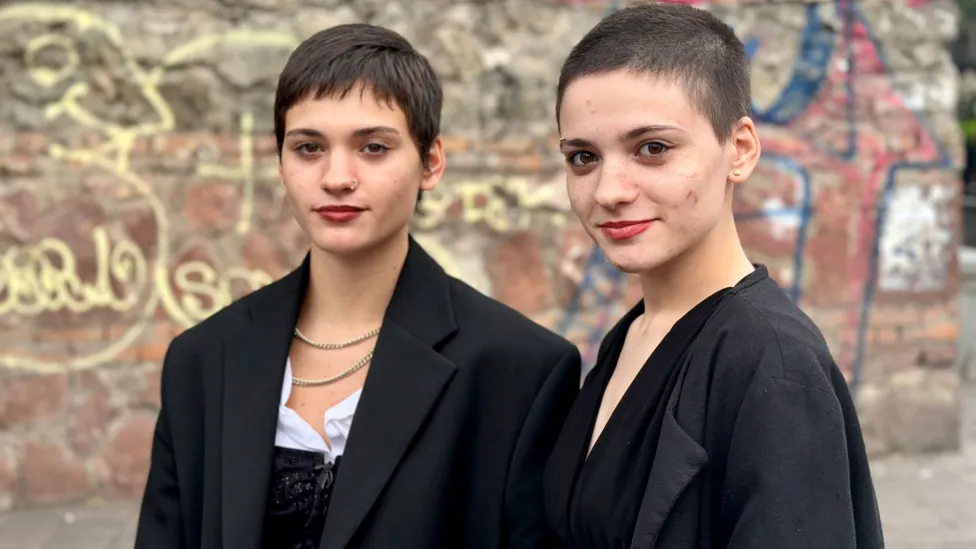
Amy and Ano are identical twins, but just after they were born they were taken from their mother and sold to separate families. Years later, they discovered each other by chance thanks to a TV talent show and a TikTok video. As they delved into their past, they realised they were among thousands of babies in Georgia stolen from hospitals and sold, some as recently as 2005. Now they want answers.
Amy is pacing up and down in a hotel room in Leipzig. “I’m scared, really scared,” she says, fidgeting nervously. “I haven’t slept all week. This is my chance to finally get some answers about what happened to us.”
Her twin sister, Ano, sits in an armchair, watching TikTok videos on her phone. “This is the woman that could have sold us,” she says, rolling her eyes. Ano admits she is nervous too, but only because she doesn’t know how she will react and if she will be able to control her anger.
It’s the end of a long journey. They have travelled from Georgia to Germany, in the hope of finding the missing piece of the puzzle. They are finally meeting their birth mother.
For the past two years they have been building a picture of what happened. As they unravelled the truth, they realised there were tens of thousands of other people in Georgia who had also been taken from hospitals as babies and sold over the decades. Despite official attempts to investigate what happened, nobody has been held to account yet.
The story of how Amy and Ano discovered each other starts when they were 12.
Amy Khvitia was at her godmother’s house near the Black Sea watching her favourite TV programme, Georgia’s Got Talent. There was a girl dancing the jive who looked exactly like her. Not just like her, in fact, identical.

“Everyone was calling my mum and asking: ‘Why is Amy dancing under another name?'” she says.
Amy mentioned it to her family but they brushed it off. “Everyone has a doppelganger,” her mother said.
Seven years later, in November 2021, Amy posted a video of herself with blue hair getting her eyebrow pierced on TikTok.
Two hundred miles (320km) away in Tbilisi, another 19-year-old, Ano Sartania, was sent the video by a friend. She thought it was “cool that she looks like me”.
Ano tried to trace the girl with the pierced eyebrow online but couldn’t find her, so she shared the video on a university WhatsApp group to see if anyone could help. Someone who knew Amy saw the message and connected them on Facebook.
Amy instantly knew Ano was the girl she had seen all those years ago on Georgia’s Got Talent.
“I have been looking for you for so long!” she messaged. “Me too,” replied Ano.
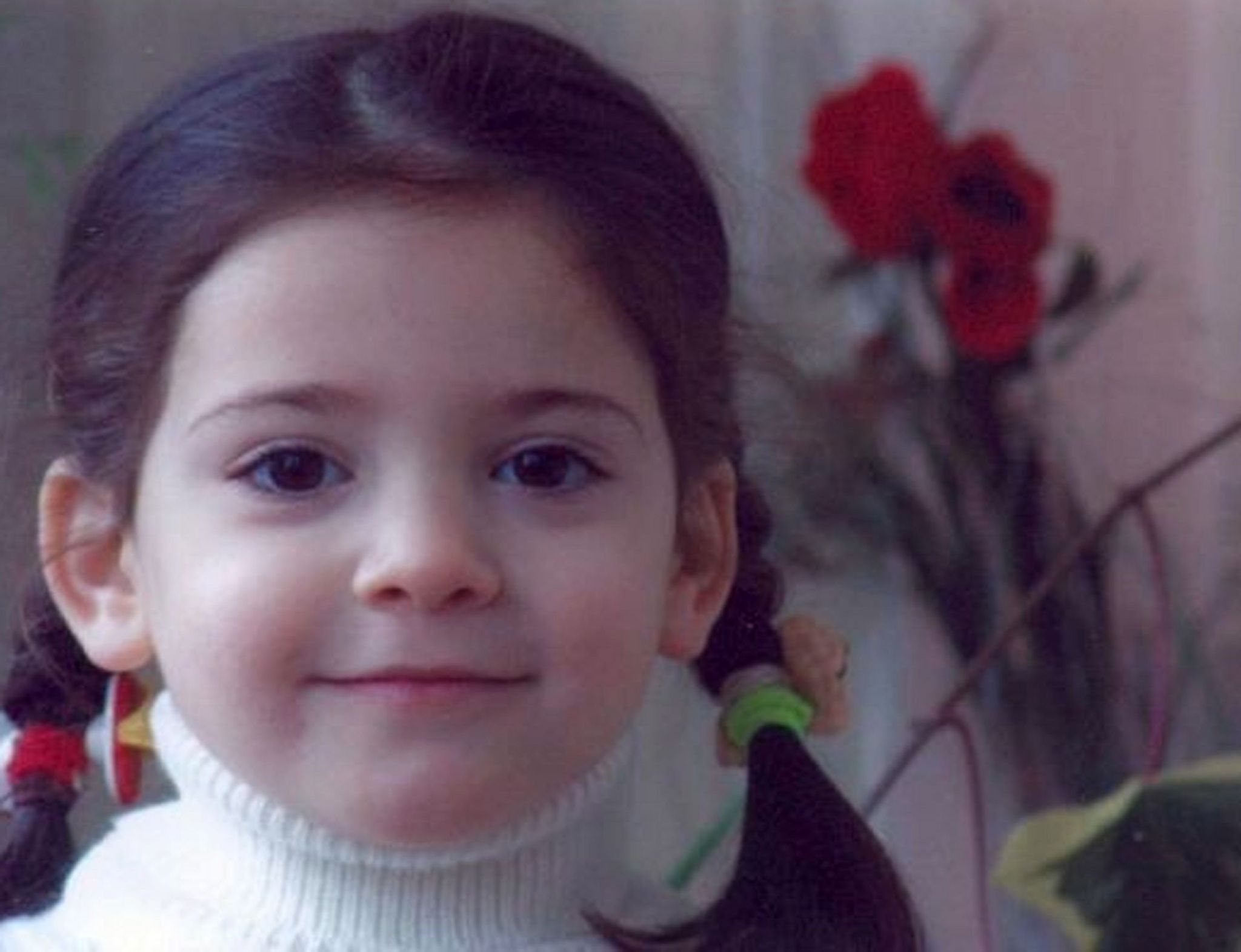
Over the next few days, they discovered they had a lot in common, but not all of it made sense. They were both born in Kirtskhi maternity hospital – which no longer exists – in western Georgia but, according to their birth certificates, their birthdays were a couple of weeks apart.
They couldn’t be sisters, much less twins. But there were too many similarities.They liked the same music, they both loved dancing and even had the same hairstyle. They discovered they had the same genetic disease, a bone disorder called dysplasia.
It felt like they were unravelling a mystery together. “Every time I learned something new about Ano, things got stranger,” says Amy.
They arranged to meet and a week later, as Amy approached the top of the escalator at Rustaveli metro station in Tbilisi, she and Ano saw each other in the flesh for the very first time. “It was like looking in a mirror, the exact same face, exact same voice. I am her and she is me,” says Amy. She knew then that they were twins.
“I don’t like hugs, but I hugged her,” says Ano.
Amy was upset and felt her whole life had been a lie. Dressed head to toe in black she looks tough, but she fiddles with her studded choker nervously and wipes a mascara-stained tear away from her cheek. “It’s a crazy story,” she says. “But it’s true.”
Ano was “angry and upset with my family, but I just wanted the difficult conversations to be over so that we could all move on”.
Digging deeper, the twins found the details on their official birth certificates, including the date they were born, were wrong.
Unable to have children, Amy’s mother says a friend told her there was an unwanted baby at the local hospital. She would need to pay the doctors but she could take her home and raise her as her own.
Ano’s mother was told the same story.
Neither of the adoptive families knew the girls were twins and despite paying a lot of money to adopt their daughters, they say they hadn’t realised it was illegal. Georgia was going through a period of turmoil and as hospital staff were involved they thought it was legitimate.
Neither family would reveal how much money was exchanged.
The twins couldn’t help wondering if their biological parents had sold them for profit.
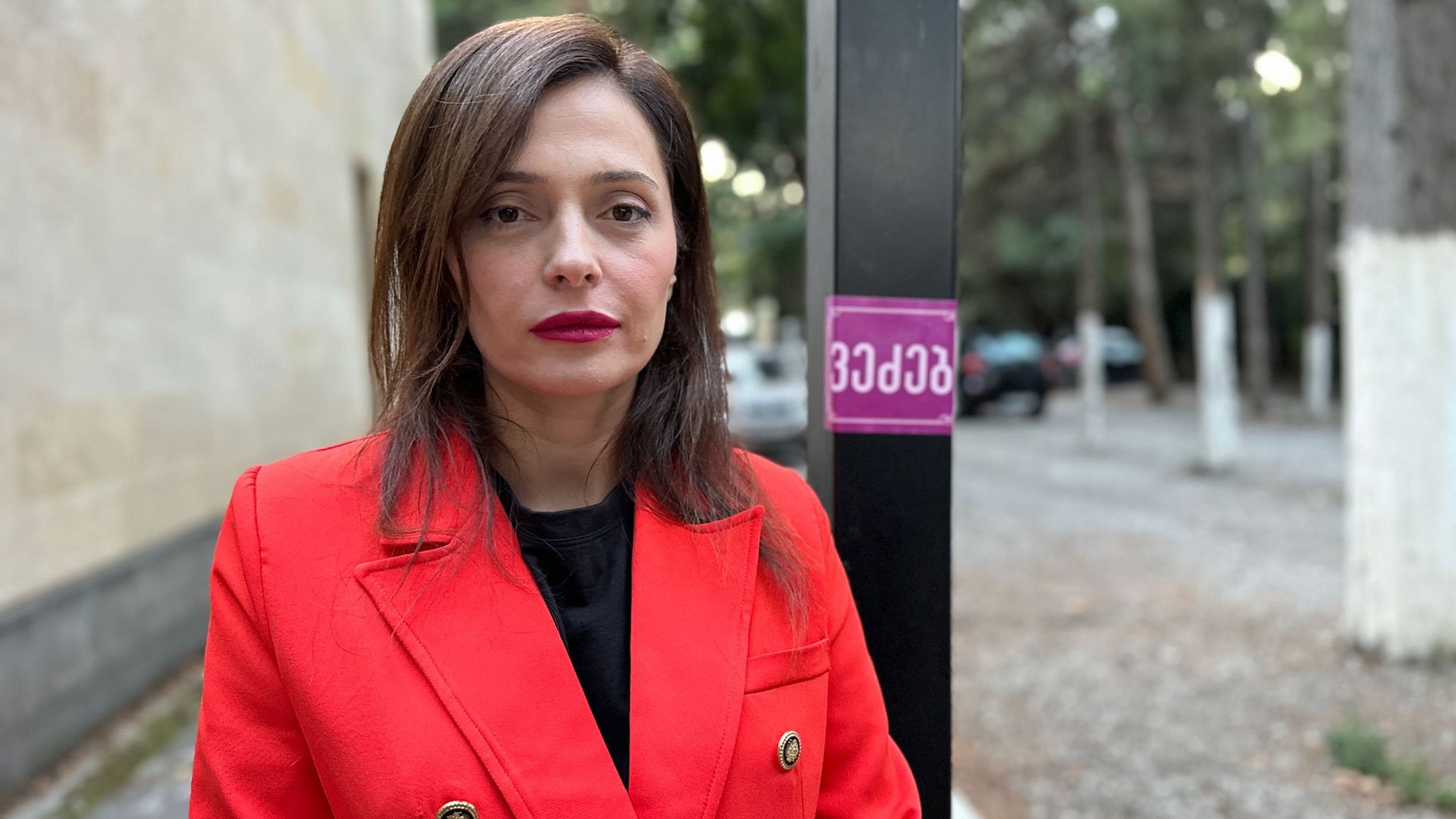
Amy wanted to search for their birth mother to find out, but Ano wasn’t sure. “Why do you want to meet the person that could have betrayed us?” she asked.
Amy found a Facebook group dedicated to reuniting Georgian families with children suspected to have been illegally adopted at birth and she shared their story.
A young woman in Germany replied, saying her mother had given birth to twin girls in Kirtskhi Maternity Hospital in 2002 and that despite being told they had died, she now had some doubts. DNA tests revealed that the girl from the Facebook group was their sister, and was living with their birth mother, Aza, in Germany.
Amy was desperate to meet Aza, but Ano was more sceptical. “This is the person who could have sold you, she’s not going to tell you the truth,” she warned. Even so she agreed to go to Germany with Amy to support her.
The Facebook group the twins had used, Vedzeb, means “I’m searching” in Georgian. It has countless posts from mothers who say hospital staff told them their babies had died, but later discovered the deaths weren’t recorded and their children could still be alive.
Other posts are from children like Amy and Ano, looking for their birth parents.
The group has more than 230,000 members and, along with access to DNA websites, has blown wide open a dark chapter in Georgia’s history.
It was set up by journalist Tamuna Museridze in 2021 after she discovered she was adopted. She found her birth certificate with incorrect details when she was clearing out her late mother’s house. She started the group to search for her own family, but the group has ended up exposing a baby trafficking scandal affecting tens of thousands of people, and spanning decades.
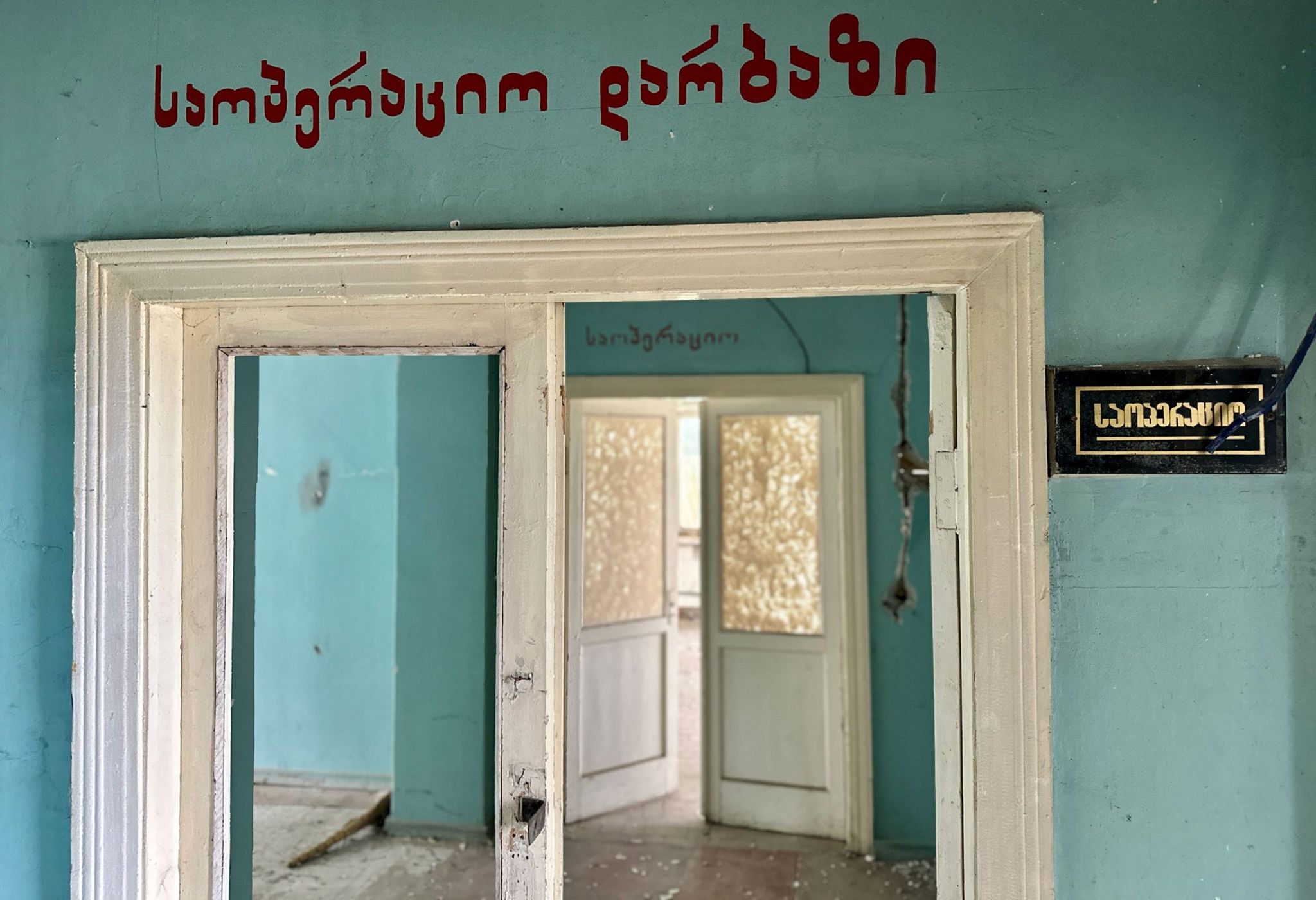
She has helped to reunite hundreds of families, but has not yet tracked down her own.
Tamuna discovered a black market in adoption that stretched across Georgia and went on from the early 1950s to 2005. She believes it was run by organised criminals and involved people from all sections of society, from taxi drivers to people high up in the government. Corrupt officials would fake the documents needed for the illegal adoptions.
“The scale is unimaginable, up to 100,000 babies were stolen. It was systemic,” she says.
Tamuna explains that she calculated this figure by counting the number of people who have contacted her and combining that with the time frame and the nationwide spread of cases. With a lack of access to documents – some have been lost and others aren’t being released – it is impossible to verify the exact figure.
Tamuna says many parents told her that when they asked to see the bodies of their dead babies they were told they had already been buried in the hospital grounds. She has since learned that cemeteries at Georgian hospitals never existed. In other cases parents would be shown dead babies who had been frozen in the mortuary.
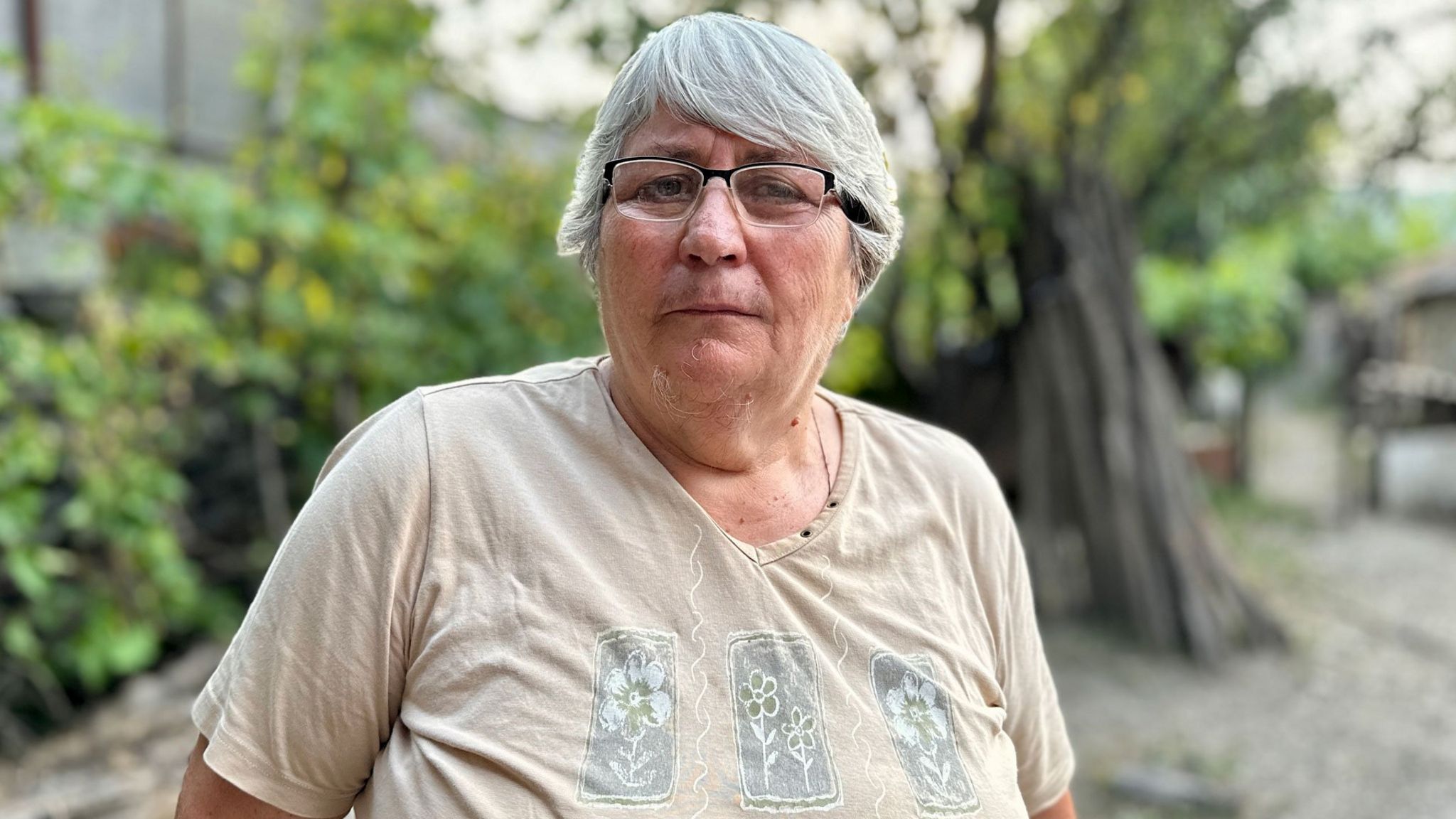
Tamuna says it was expensive to buy a child, about the equivalent of a year’s salary. She discovered that some children ended up with foreign families in the US, Canada, Cyprus, Russia and Ukraine.
In 2005 Georgia changed its adoption legislation and in 2006 it strengthened anti-trafficking laws, making illegal adoptions more difficult.
Another person looking for answers is Irina Otarashvili. She gave birth to twin boys in a maternity hospital in Kvareli, in the foothills of Georgia’s Caucasus mountains in 1978.
The doctors told her both boys were healthy but, for reasons that were never explained, they were kept away from her.
Three days after they were born, she was told they had both suddenly died. A doctor said they had respiratory problems.
Irina and her husband couldn’t make sense of it, but especially in Soviet times “you didn’t question authority” she says. She believed everything they said.
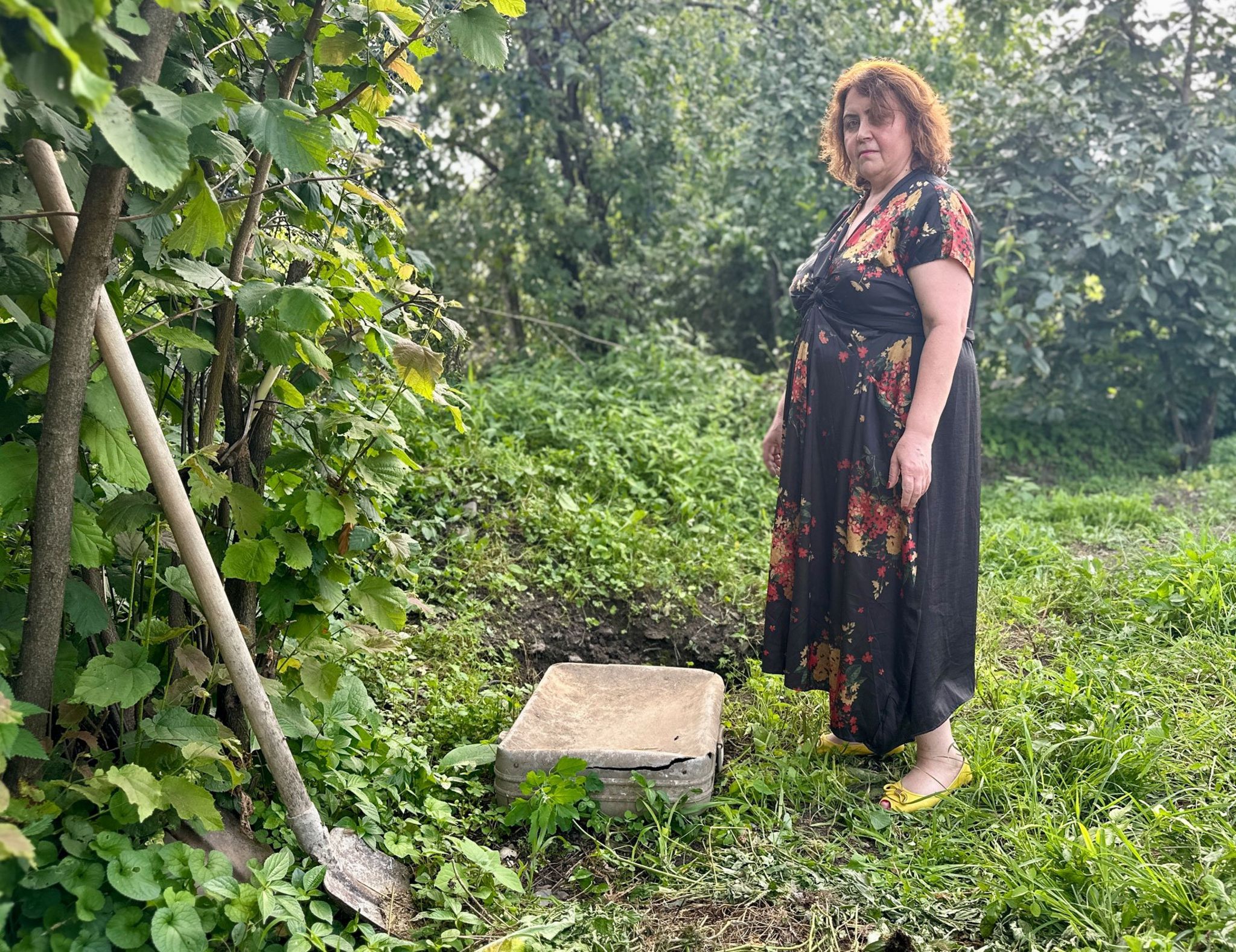
They were asked to bring a suitcase to take the infants’ remains away and to bury it in a cemetery or their back garden, as was common for babies at the time. The doctor told them never to open the case as it would be too upsetting to see the bodies.
Irina did as she was told, but 44 years later her daughter Nino found Tamuna’s Facebook group and grew suspicious. “What if our brothers didn’t really die?” she wondered. Nino and her sister Nana decided to dig up the suitcase.
“My heart was racing,” she says. “When we opened it there were no bones, just sticks. We didn’t know whether to laugh or cry.”
She says local police confirmed the contents were branches from a grape vine and there was no trace of human remains. She now believes her long-lost brothers could still be alive.

In the hotel in Leipzig, Amy and Ano prepare to meet their birth mother. Ano says she’s changed her mind and wants to back out. But it’s a momentary wobble and, taking a deep breath, she decides to go ahead.
Their biological mother, Aza, waits nervously in another room.
Amy opens the door hesitantly and Ano follows, almost pushing her sister into the room.
Aza lunges forward and embraces them tightly, one twin on each side. Minutes pass and locked in embrace, no-one speaks.
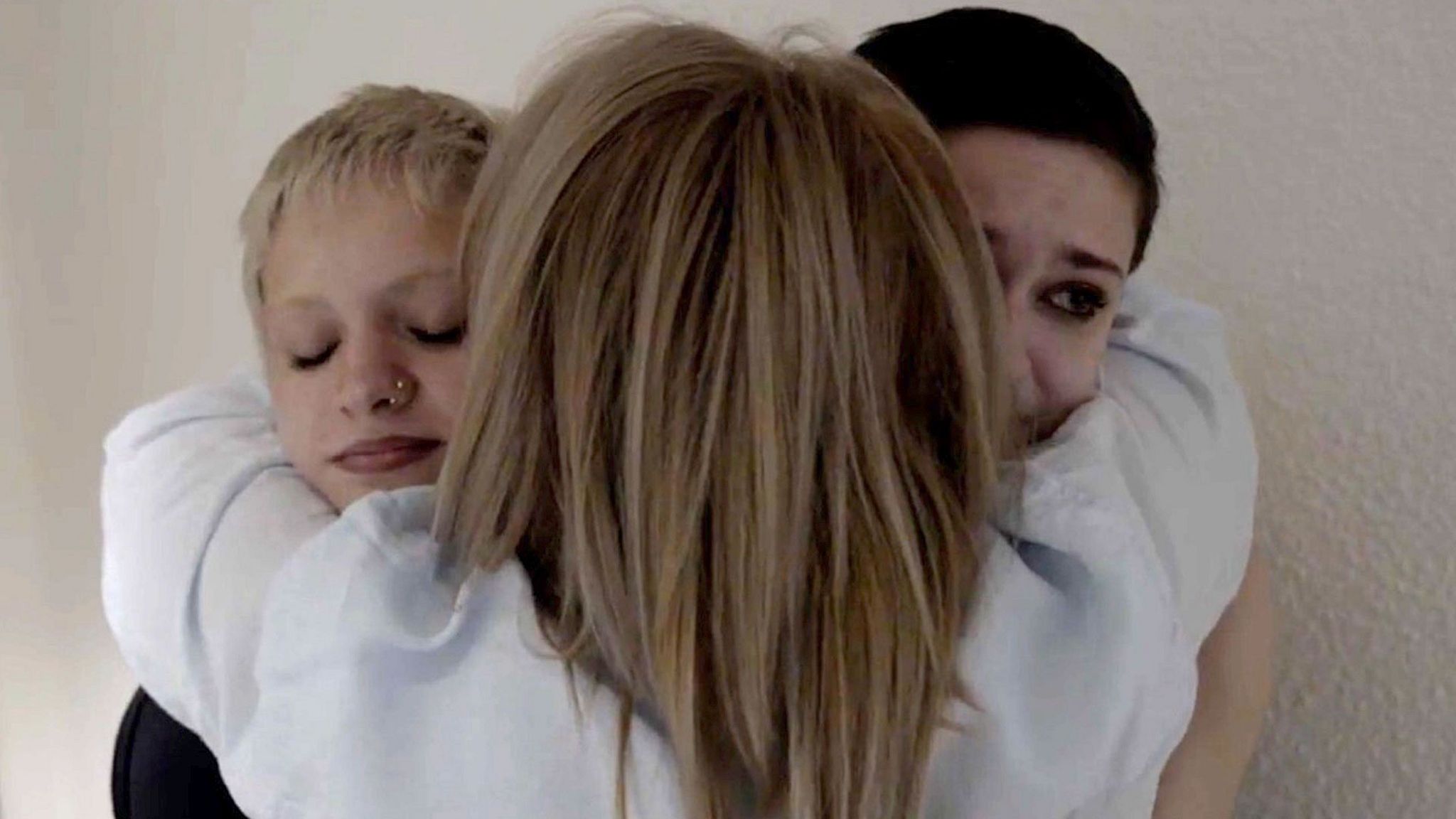
Tears stream down Amy’s face but Ano remains stoic and unwavering. She even looks a little irritated.
The three of them sit down to talk in private. Later, the twins say that their mother explained she had been ill after giving birth and fell into a coma. When she awoke, hospital staff told her that shortly after the babies were born, they had died.
She said that meeting Amy and Ano has given her life new meaning. Although they are not close, they are still in touch.
In 2022, the Georgian government launched an investigation into historic child trafficking. It told the BBC it has spoken to more than 40 people but the cases were “very old and historic data has been lost”. Journalist Tamuna Museridze says she has shared information but the government hasn’t said when it will release its report.
It has made at least four attempts to get to the bottom of what happened. These include an investigation in 2003 into international child trafficking which led to a number of arrests but little information has been made public. And in 2015, after another investigation, Georgian media reported that the general director of the Rustavi maternity hospital, Aleksandre Baravkovi, was arrested but cleared and returned to work.
The BBC approached the Georgian Interior Ministry for further information on individual cases but we were told that specific details would not be released due to data protection.
Tamuna has now joined forces with human rights lawyer Lia Mukhashavria to take the cases of a group of victims to the Georgian courts. They want the right to access their birth documents – something not currently possible under Georgian law.
They hope that this will help lay ghosts to rest. “I always felt like there was something or someone missing in my life,” says Ano. “I used to dream about a little girl in black who would follow me around and ask me about my day.” That feeling disappeared when she found Amy.
Features
The heart-friendly health minister

by Dr Gotabhya Ranasinghe
Senior Consultant Cardiologist
National Hospital Sri Lanka
When we sought a meeting with Hon Dr. Ramesh Pathirana, Minister of Health, he graciously cleared his busy schedule to accommodate us. Renowned for his attentive listening and deep understanding, Minister Pathirana is dedicated to advancing the health sector. His openness and transparency exemplify the qualities of an exemplary politician and minister.
Dr. Palitha Mahipala, the current Health Secretary, demonstrates both commendable enthusiasm and unwavering support. This combination of attributes makes him a highly compatible colleague for the esteemed Minister of Health.
Our discussion centered on a project that has been in the works for the past 30 years, one that no other minister had managed to advance.
Minister Pathirana, however, recognized the project’s significance and its potential to revolutionize care for heart patients.
The project involves the construction of a state-of-the-art facility at the premises of the National Hospital Colombo. The project’s location within the premises of the National Hospital underscores its importance and relevance to the healthcare infrastructure of the nation.
This facility will include a cardiology building and a tertiary care center, equipped with the latest technology to handle and treat all types of heart-related conditions and surgeries.
Securing funding was a major milestone for this initiative. Minister Pathirana successfully obtained approval for a $40 billion loan from the Asian Development Bank. With the funding in place, the foundation stone is scheduled to be laid in September this year, and construction will begin in January 2025.
This project guarantees a consistent and uninterrupted supply of stents and related medications for heart patients. As a result, patients will have timely access to essential medical supplies during their treatment and recovery. By securing these critical resources, the project aims to enhance patient outcomes, minimize treatment delays, and maintain the highest standards of cardiac care.
Upon its fruition, this monumental building will serve as a beacon of hope and healing, symbolizing the unwavering dedication to improving patient outcomes and fostering a healthier society.We anticipate a future marked by significant progress and positive outcomes in Sri Lanka’s cardiovascular treatment landscape within the foreseeable timeframe.
Features
A LOVING TRIBUTE TO JESUIT FR. ALOYSIUS PIERIS ON HIS 90th BIRTHDAY

by Fr. Emmanuel Fernando, OMI
Jesuit Fr. Aloysius Pieris (affectionately called Fr. Aloy) celebrated his 90th birthday on April 9, 2024 and I, as the editor of our Oblate Journal, THE MISSIONARY OBLATE had gone to press by that time. Immediately I decided to publish an article, appreciating the untiring selfless services he continues to offer for inter-Faith dialogue, the renewal of the Catholic Church, his concern for the poor and the suffering Sri Lankan masses and to me, the present writer.
It was in 1988, when I was appointed Director of the Oblate Scholastics at Ampitiya by the then Oblate Provincial Fr. Anselm Silva, that I came to know Fr. Aloy more closely. Knowing well his expertise in matters spiritual, theological, Indological and pastoral, and with the collaborative spirit of my companion-formators, our Oblate Scholastics were sent to Tulana, the Research and Encounter Centre, Kelaniya, of which he is the Founder-Director, for ‘exposure-programmes’ on matters spiritual, biblical, theological and pastoral. Some of these dimensions according to my view and that of my companion-formators, were not available at the National Seminary, Ampitiya.
Ever since that time, our Oblate formators/ accompaniers at the Oblate Scholasticate, Ampitiya , have continued to send our Oblate Scholastics to Tulana Centre for deepening their insights and convictions regarding matters needed to serve the people in today’s context. Fr. Aloy also had tried very enthusiastically with the Oblate team headed by Frs. Oswald Firth and Clement Waidyasekara to begin a Theologate, directed by the Religious Congregations in Sri Lanka, for the contextual formation/ accompaniment of their members. It should very well be a desired goal of the Leaders / Provincials of the Religious Congregations.
Besides being a formator/accompanier at the Oblate Scholasticate, I was entrusted also with the task of editing and publishing our Oblate journal, ‘The Missionary Oblate’. To maintain the quality of the journal I continue to depend on Fr. Aloy for his thought-provoking and stimulating articles on Biblical Spirituality, Biblical Theology and Ecclesiology. I am very grateful to him for his generous assistance. Of late, his writings on renewal of the Church, initiated by Pope St. John XX111 and continued by Pope Francis through the Synodal path, published in our Oblate journal, enable our readers to focus their attention also on the needed renewal in the Catholic Church in Sri Lanka. Fr. Aloy appreciated very much the Synodal path adopted by the Jesuit Pope Francis for the renewal of the Church, rooted very much on prayerful discernment. In my Religious and presbyteral life, Fr.Aloy continues to be my spiritual animator / guide and ongoing formator / acccompanier.
Fr. Aloysius Pieris, BA Hons (Lond), LPh (SHC, India), STL (PFT, Naples), PhD (SLU/VC), ThD (Tilburg), D.Ltt (KU), has been one of the eminent Asian theologians well recognized internationally and one who has lectured and held visiting chairs in many universities both in the West and in the East. Many members of Religious Congregations from Asian countries have benefited from his lectures and guidance in the East Asian Pastoral Institute (EAPI) in Manila, Philippines. He had been a Theologian consulted by the Federation of Asian Bishops’ Conferences for many years. During his professorship at the Gregorian University in Rome, he was called to be a member of a special group of advisers on other religions consulted by Pope Paul VI.
Fr. Aloy is the author of more than 30 books and well over 500 Research Papers. Some of his books and articles have been translated and published in several countries. Among those books, one can find the following: 1) The Genesis of an Asian Theology of Liberation (An Autobiographical Excursus on the Art of Theologising in Asia, 2) An Asian Theology of Liberation, 3) Providential Timeliness of Vatican 11 (a long-overdue halt to a scandalous millennium, 4) Give Vatican 11 a chance, 5) Leadership in the Church, 6) Relishing our faith in working for justice (Themes for study and discussion), 7) A Message meant mainly, not exclusively for Jesuits (Background information necessary for helping Francis renew the Church), 8) Lent in Lanka (Reflections and Resolutions, 9) Love meets wisdom (A Christian Experience of Buddhism, 10) Fire and Water 11) God’s Reign for God’s poor, 12) Our Unhiddden Agenda (How we Jesuits work, pray and form our men). He is also the Editor of two journals, Vagdevi, Journal of Religious Reflection and Dialogue, New Series.
Fr. Aloy has a BA in Pali and Sanskrit from the University of London and a Ph.D in Buddhist Philosophy from the University of Sri Lankan, Vidyodaya Campus. On Nov. 23, 2019, he was awarded the prestigious honorary Doctorate of Literature (D.Litt) by the Chancellor of the University of Kelaniya, the Most Venerable Welamitiyawe Dharmakirthi Sri Kusala Dhamma Thera.
Fr. Aloy continues to be a promoter of Gospel values and virtues. Justice as a constitutive dimension of love and social concern for the downtrodden masses are very much noted in his life and work. He had very much appreciated the commitment of the late Fr. Joseph (Joe) Fernando, the National Director of the Social and Economic Centre (SEDEC) for the poor.
In Sri Lanka, a few religious Congregations – the Good Shepherd Sisters, the Christian Brothers, the Marist Brothers and the Oblates – have invited him to animate their members especially during their Provincial Congresses, Chapters and International Conferences. The mainline Christian Churches also have sought his advice and followed his seminars. I, for one, regret very much, that the Sri Lankan authorities of the Catholic Church –today’s Hierarchy—- have not sought Fr.
Aloy’s expertise for the renewal of the Catholic Church in Sri Lanka and thus have not benefited from the immense store of wisdom and insight that he can offer to our local Church while the Sri Lankan bishops who governed the Catholic church in the immediate aftermath of the Second Vatican Council (Edmund Fernando OMI, Anthony de Saram, Leo Nanayakkara OSB, Frank Marcus Fernando, Paul Perera,) visited him and consulted him on many matters. Among the Tamil Bishops, Bishop Rayappu Joseph was keeping close contact with him and Bishop J. Deogupillai hosted him and his team visiting him after the horrible Black July massacre of Tamils.
Features
A fairy tale, success or debacle

Sri Lanka-Singapore Free Trade Agreement
By Gomi Senadhira
senadhiragomi@gmail.com
“You might tell fairy tales, but the progress of a country cannot be achieved through such narratives. A country cannot be developed by making false promises. The country moved backward because of the electoral promises made by political parties throughout time. We have witnessed that the ultimate result of this is the country becoming bankrupt. Unfortunately, many segments of the population have not come to realize this yet.” – President Ranil Wickremesinghe, 2024 Budget speech
Any Sri Lankan would agree with the above words of President Wickremesinghe on the false promises our politicians and officials make and the fairy tales they narrate which bankrupted this country. So, to understand this, let’s look at one such fairy tale with lots of false promises; Ranil Wickremesinghe’s greatest achievement in the area of international trade and investment promotion during the Yahapalana period, Sri Lanka-Singapore Free Trade Agreement (SLSFTA).
It is appropriate and timely to do it now as Finance Minister Wickremesinghe has just presented to parliament a bill on the National Policy on Economic Transformation which includes the establishment of an Office for International Trade and the Sri Lanka Institute of Economics and International Trade.
Was SLSFTA a “Cleverly negotiated Free Trade Agreement” as stated by the (former) Minister of Development Strategies and International Trade Malik Samarawickrama during the Parliamentary Debate on the SLSFTA in July 2018, or a colossal blunder covered up with lies, false promises, and fairy tales? After SLSFTA was signed there were a number of fairy tales published on this agreement by the Ministry of Development Strategies and International, Institute of Policy Studies, and others.
However, for this article, I would like to limit my comments to the speech by Minister Samarawickrama during the Parliamentary Debate, and the two most important areas in the agreement which were covered up with lies, fairy tales, and false promises, namely: revenue loss for Sri Lanka and Investment from Singapore. On the other important area, “Waste products dumping” I do not want to comment here as I have written extensively on the issue.
1. The revenue loss
During the Parliamentary Debate in July 2018, Minister Samarawickrama stated “…. let me reiterate that this FTA with Singapore has been very cleverly negotiated by us…. The liberalisation programme under this FTA has been carefully designed to have the least impact on domestic industry and revenue collection. We have included all revenue sensitive items in the negative list of items which will not be subject to removal of tariff. Therefore, 97.8% revenue from Customs duty is protected. Our tariff liberalisation will take place over a period of 12-15 years! In fact, the revenue earned through tariffs on goods imported from Singapore last year was Rs. 35 billion.
The revenue loss for over the next 15 years due to the FTA is only Rs. 733 million– which when annualised, on average, is just Rs. 51 million. That is just 0.14% per year! So anyone who claims the Singapore FTA causes revenue loss to the Government cannot do basic arithmetic! Mr. Speaker, in conclusion, I call on my fellow members of this House – don’t mislead the public with baseless criticism that is not grounded in facts. Don’t look at petty politics and use these issues for your own political survival.”
I was surprised to read the minister’s speech because an article published in January 2018 in “The Straits Times“, based on information released by the Singaporean Negotiators stated, “…. With the FTA, tariff savings for Singapore exports are estimated to hit $10 million annually“.
As the annual tariff savings (that is the revenue loss for Sri Lanka) calculated by the Singaporean Negotiators, Singaporean $ 10 million (Sri Lankan rupees 1,200 million in 2018) was way above the rupees’ 733 million revenue loss for 15 years estimated by the Sri Lankan negotiators, it was clear to any observer that one of the parties to the agreement had not done the basic arithmetic!
Six years later, according to a report published by “The Morning” newspaper, speaking at the Committee on Public Finance (COPF) on 7th May 2024, Mr Samarawickrama’s chief trade negotiator K.J. Weerasinghehad had admitted “…. that forecasted revenue loss for the Government of Sri Lanka through the Singapore FTA is Rs. 450 million in 2023 and Rs. 1.3 billion in 2024.”
If these numbers are correct, as tariff liberalisation under the SLSFTA has just started, we will pass Rs 2 billion very soon. Then, the question is how Sri Lanka’s trade negotiators made such a colossal blunder. Didn’t they do their basic arithmetic? If they didn’t know how to do basic arithmetic they should have at least done their basic readings. For example, the headline of the article published in The Straits Times in January 2018 was “Singapore, Sri Lanka sign FTA, annual savings of $10m expected”.
Anyway, as Sri Lanka’s chief negotiator reiterated at the COPF meeting that “…. since 99% of the tariffs in Singapore have zero rates of duty, Sri Lanka has agreed on 80% tariff liberalisation over a period of 15 years while expecting Singapore investments to address the imbalance in trade,” let’s turn towards investment.
Investment from Singapore
In July 2018, speaking during the Parliamentary Debate on the FTA this is what Minister Malik Samarawickrama stated on investment from Singapore, “Already, thanks to this FTA, in just the past two-and-a-half months since the agreement came into effect we have received a proposal from Singapore for investment amounting to $ 14.8 billion in an oil refinery for export of petroleum products. In addition, we have proposals for a steel manufacturing plant for exports ($ 1 billion investment), flour milling plant ($ 50 million), sugar refinery ($ 200 million). This adds up to more than $ 16.05 billion in the pipeline on these projects alone.
And all of these projects will create thousands of more jobs for our people. In principle approval has already been granted by the BOI and the investors are awaiting the release of land the environmental approvals to commence the project.
I request the Opposition and those with vested interests to change their narrow-minded thinking and join us to develop our country. We must always look at what is best for the whole community, not just the few who may oppose. We owe it to our people to courageously take decisions that will change their lives for the better.”
According to the media report I quoted earlier, speaking at the Committee on Public Finance (COPF) Chief Negotiator Weerasinghe has admitted that Sri Lanka was not happy with overall Singapore investments that have come in the past few years in return for the trade liberalisation under the Singapore-Sri Lanka Free Trade Agreement. He has added that between 2021 and 2023 the total investment from Singapore had been around $162 million!
What happened to those projects worth $16 billion negotiated, thanks to the SLSFTA, in just the two-and-a-half months after the agreement came into effect and approved by the BOI? I do not know about the steel manufacturing plant for exports ($ 1 billion investment), flour milling plant ($ 50 million) and sugar refinery ($ 200 million).
However, story of the multibillion-dollar investment in the Petroleum Refinery unfolded in a manner that would qualify it as the best fairy tale with false promises presented by our politicians and the officials, prior to 2019 elections.
Though many Sri Lankans got to know, through the media which repeatedly highlighted a plethora of issues surrounding the project and the questionable credentials of the Singaporean investor, the construction work on the Mirrijiwela Oil Refinery along with the cement factory began on the24th of March 2019 with a bang and Minister Ranil Wickremesinghe and his ministers along with the foreign and local dignitaries laid the foundation stones.
That was few months before the 2019 Presidential elections. Inaugurating the construction work Prime Minister Ranil Wickremesinghe said the projects will create thousands of job opportunities in the area and surrounding districts.
The oil refinery, which was to be built over 200 acres of land, with the capacity to refine 200,000 barrels of crude oil per day, was to generate US$7 billion of exports and create 1,500 direct and 3,000 indirect jobs. The construction of the refinery was to be completed in 44 months. Four years later, in August 2023 the Cabinet of Ministers approved the proposal presented by President Ranil Wickremesinghe to cancel the agreement with the investors of the refinery as the project has not been implemented! Can they explain to the country how much money was wasted to produce that fairy tale?
It is obvious that the President, ministers, and officials had made huge blunders and had deliberately misled the public and the parliament on the revenue loss and potential investment from SLSFTA with fairy tales and false promises.
As the president himself said, a country cannot be developed by making false promises or with fairy tales and these false promises and fairy tales had bankrupted the country. “Unfortunately, many segments of the population have not come to realize this yet”.
(The writer, a specialist and an activist on trade and development issues . )














